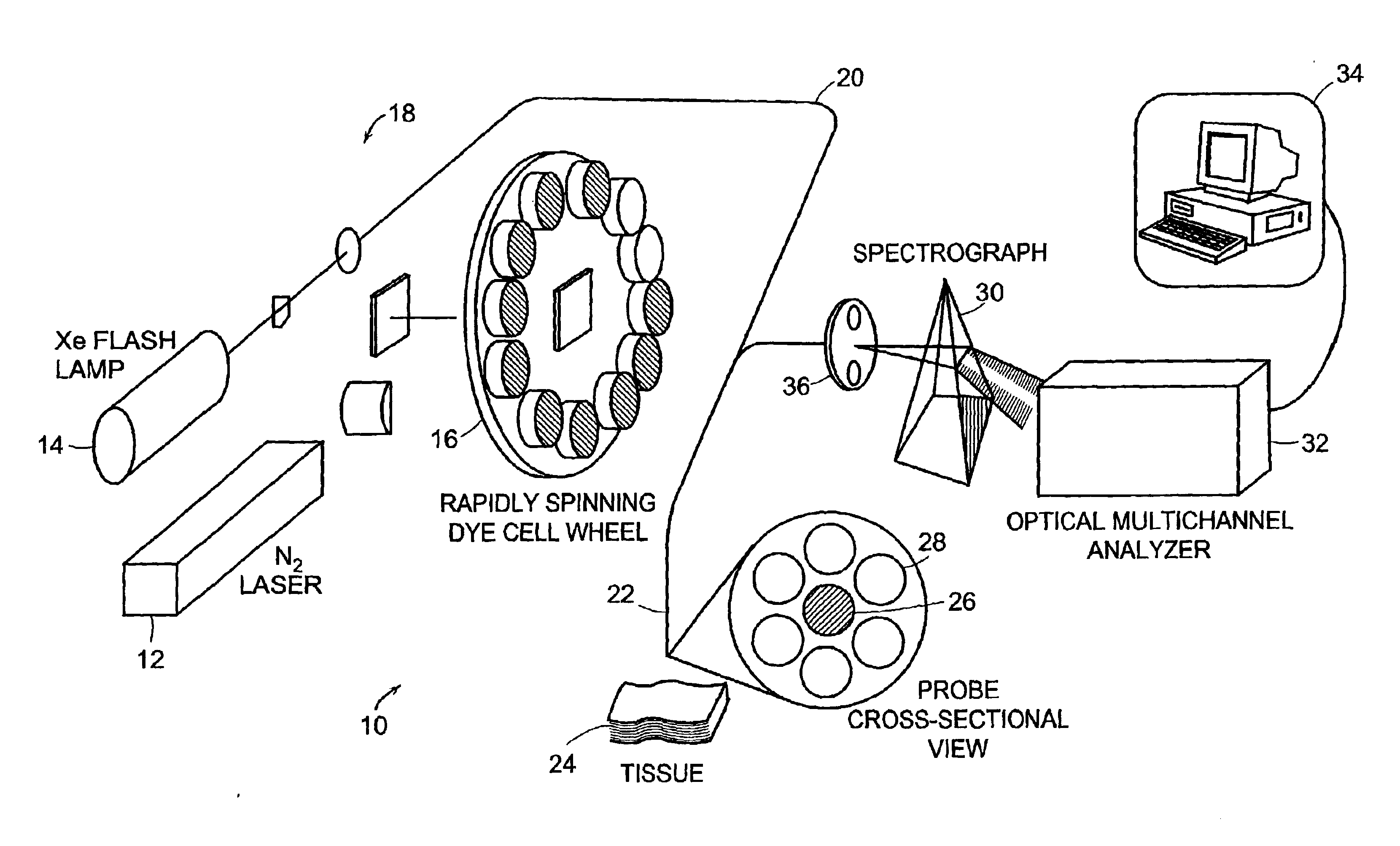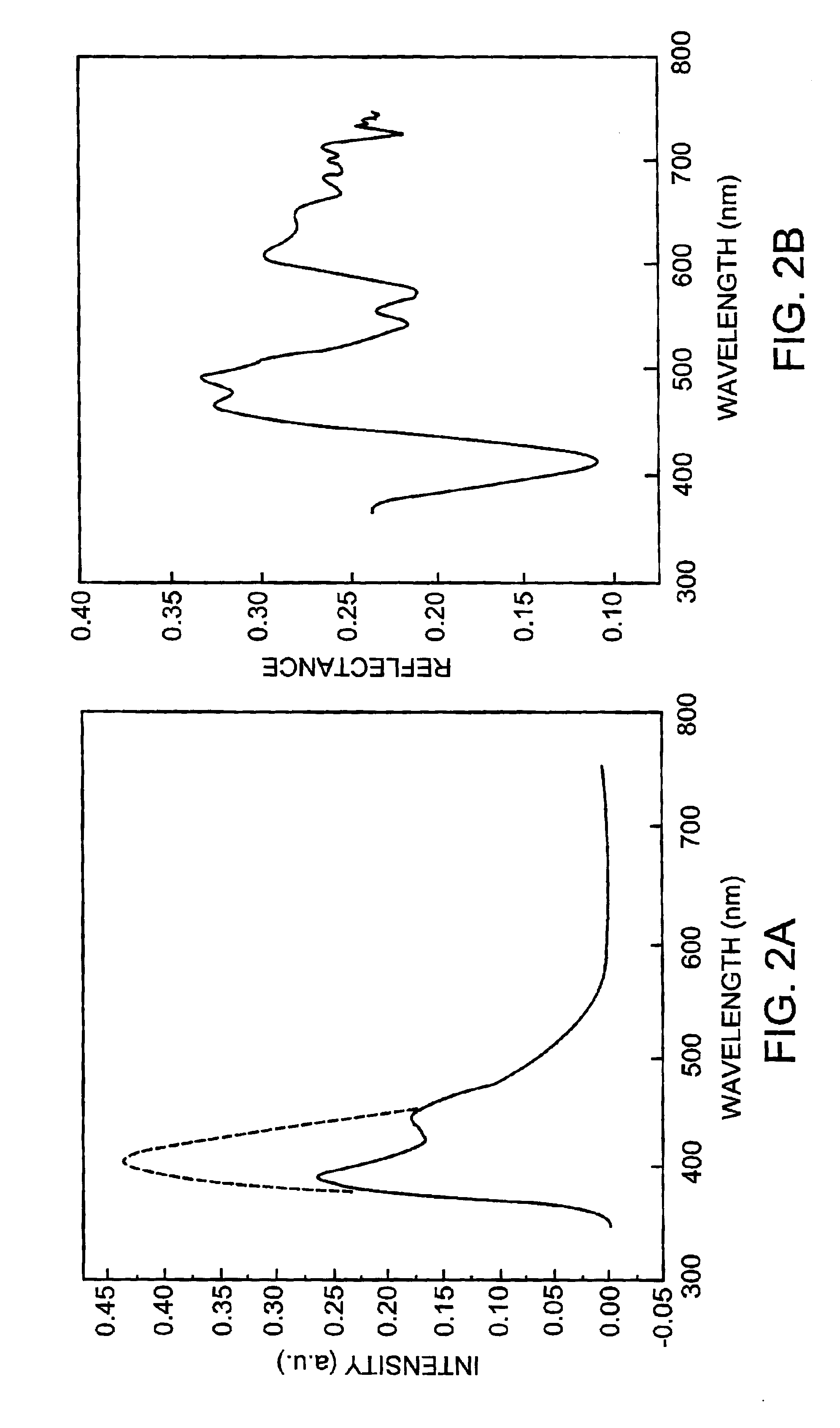System and methods of fluorescence, reflectance and light scattering spectroscopy for measuring tissue characteristics
a tissue characteristic and fluorescence technology, applied in the field of tissue characteristic measurement system and method, can solve the problems of difficult diagnosis of dysplasia, dysplasia is not visible, and the histopathologic diagnosis of dysplasia is problematic, so as to improve the sensitivity and accuracy of tissue measurement.
- Summary
- Abstract
- Description
- Claims
- Application Information
AI Technical Summary
Benefits of technology
Problems solved by technology
Method used
Image
Examples
Embodiment Construction
[0031]Measurements are performed, for example, using a fast excitation-emission matrix (EEM) instrument 10 that has been described in greater detail in U.S. application Ser. No. 09 / 238,664, filed Jan. 26, 1999, now U.S. Pat. No. 6,537,211, issued Mar. 25, 2003, the entire contents of which is incorporated herein by reference. The excication light source of this fast-EEM system can include a nitrogen laser 12 emitting at 377 nm (Laser Science, Inc., Franklin, Mass.; Model: VSL-337MD) pumping 10 dye cuvettes precisely mounted on a rapidly rotating wheel 16. In this manner, in a preferred embodiment, eleven different excitation wavelengths are obtained between 337 and 620 nm and coupled using optical system 18 into the delivery fiber of a 1 mm diameter optical fiber probe 20. For the reflectance measurements, white light (350-700 nm) from a Xe flash lamp 14 (Perkin Elmer Optoelectronics, Salem, Mass. is coupled into the sante probe. Alternatively, for other embodiments involving measur...
PUM
| Property | Measurement | Unit |
|---|---|---|
| diameter | aaaaa | aaaaa |
| diameter | aaaaa | aaaaa |
| excitation wavelengths | aaaaa | aaaaa |
Abstract
Description
Claims
Application Information
 Login to View More
Login to View More - R&D
- Intellectual Property
- Life Sciences
- Materials
- Tech Scout
- Unparalleled Data Quality
- Higher Quality Content
- 60% Fewer Hallucinations
Browse by: Latest US Patents, China's latest patents, Technical Efficacy Thesaurus, Application Domain, Technology Topic, Popular Technical Reports.
© 2025 PatSnap. All rights reserved.Legal|Privacy policy|Modern Slavery Act Transparency Statement|Sitemap|About US| Contact US: help@patsnap.com



